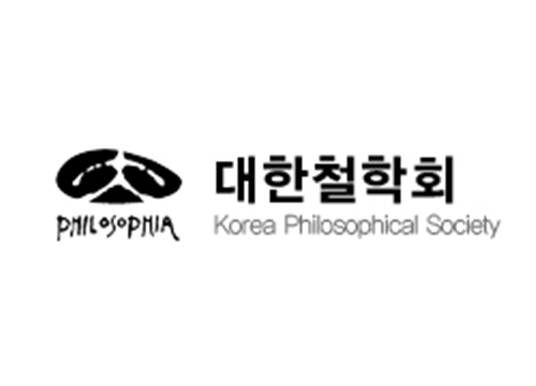사상의학의 철학적 배경으로서의 易理說 – 『東醫壽世保元註釋』을 중심으로 –
I Ching Principle as a Philosophical Background of Sasang Constitutional Medicine- Centering on the 『DongEui SooSe BoWon JooSeok (東醫壽世保元註釋)』 –
허훈
중앙대학교
철학연구
2024, vol.170, pp. 381-408 (28 pages)
10.20293/jokps.2024.170.381
대한철학회
초록
‘四象醫學’으로 象徵되는 동무 이제마(1837~1900)의 四象說은 이제 학적 체계를 구축한 하나의 학문으로서 정립되어, 그 학문적 위상은 매우 높다고 할 수 있다. 하지만 그의 사상설에는 기초적인 이론적 토대에 관한 논의에 있어서조차 아직 해결하지 못한 뜨거운 쟁점 또한 존재한다.
크게 보면 두 가지 정도인데, 그중 하나가 ‘사상의학은 한의학의 기초 이론인 오행론을 수용하는가?’의 與否 문제이며, 또 다른 하나는 “동무 자신의 醫論에 (본래 ‘四象’이라는 용어의 출처인) 『주역』의 ‘易理’를 적용했을까?”라는 문제이다.
이에 대한 견해는 현재 학자에 따라 긍정 혹은 부정으로 크게 갈린다. 동무의 주요 저작으로는 철학서인 『格致藁』(1880~1893)와 의학적 내용을 담고 있는 『東醫壽世保元』(1894)이 있고, 이외에도 易理로 『東醫壽世保元』을 풀이한 『東武遺稿』(시기 미상), 五行에 관한 서술이 들어 있는 『東醫壽世保元草本卷』(1882~1883?) 등이 있으나, 후자의 문헌들은 典據로서의 신뢰를 얻지 못하고 있다. ‘四象’의 주역설을 옹호하는 이들은 주로 『東武遺稿』를 전거로 제시하지만, 반론을 제기하는 이들은 필사본 초고 형태로 발견된 이 미상의 문집이 동무의 직접적인 저작물이 아닐 수 있다는 의구심을 품는다.
본고에서는 『東醫壽世保元』을 역리로 해석한 斗庵 韓東錫(1911~1968)의 『東醫壽世保元註釋』(1967)을 통해 『東醫壽世保元』 「性命論」 서두에 나오는 개념들의 敍述 方式을 분석하였다. 이 서술 방식을 相異한 방식으로 서술한 다른 문장들과 비교해 보면, ‘四象’의 導出이 易理에 근거하고 있음을 추론해 보는 것이 가능하다. 즉 『동의수세보원』 「性命論」과 『東武遺稿』에 나타난 四象에 관한 서술 순서[방식]는 易理[天機]의 관점과 인간주체적[四象人] 관점을 병행했을 때라야 비로소 이해 가능하다. 다시 말해 본고에서는 ‘四象’의 도출과정에 관한 중요한 단서를 동무가 직접 저술한 문헌들을 통해 얻고자 하였다.
Dongmoo Lee Je-Ma (東武 李濟馬, 1837~1900)’s theory of the Sasang (四象, four images: taiyang, shaoyang, tainyin, shaoyin), symbolized by “Sasang Constitutional Medicine (SCM),” has now been established as a discipline with an academic system, and its academic status is very high. However, there are also hot issues in his theory that have not yet been resolved, even in the discussion of the basic theoretical foundations.
There are two main issues, one of which is, “Does SCM accept the Five Elements Theory which is the basic theory of Traditional Chinese medicine (TCM)?” and the other is, “Did he apply the I Ching principle (the original source of the term “Sasang (四象, four images)” to his own medical theory?”. Currently, scholars are divided on this issue, either in the affirmative or negative.
His main works include the philosophical work, the Gyeokchigo (Manuscript of Science) and the medical work, the 『DongEui SooSe BoWon (東醫壽世保元, Longevity and Life Preservation in Eastern Medicine)』. Other works include the 『Dongmooyugo (東武遺稿)』 which is an interpretation of 『Dongui susebowon』 based on the principle of I Ching, and books such as 『Dongui soose bowon chobongwon (東醫壽世保元草本卷』 which contain descriptions of the Five Elements, but the latter works have not gained credibility as texts.
Those who defend the principle of I Ching of the ‘Sasang (四象, four images)’ mainly present 『Dongmooyugo (東武遺稿)』 as an example, but those who raise counterarguments have doubts that this unidentified text, which was discovered in the form of a manuscript, may not be Dongmoo’s direct work.
In this paper, I analyze the description method of the concepts that appear in the beginning of 『DongEui SooSe BoWon』’s 「A Discourse on Nature and Order(性命論)」 through Han Dong-seok (韓東錫)’s 『DongEui SooSe BoWon JooSeok (東醫壽世保元註釋)』 which interpreted 『DongEui SooSe BoWon』 as the principle of the I Ching. I also note that by comparing this method of description with other sentences that are described in a different way, it is possible to infer that the induction of the ‘Sasang’ is based on the principle of the Book of Changes. The sequence method of narrating the “Sasang (四象)” in the 『DongEui SooSe BoWon』 and the 『Dongmooyugo』 can only be understood by combining the view of the I Ching principle with the view of the human subject. In other words, in this paper, I have tried to obtain important clues about the process of derivation of the ‘Sasang’ from the writings of Dongmoo himself.

